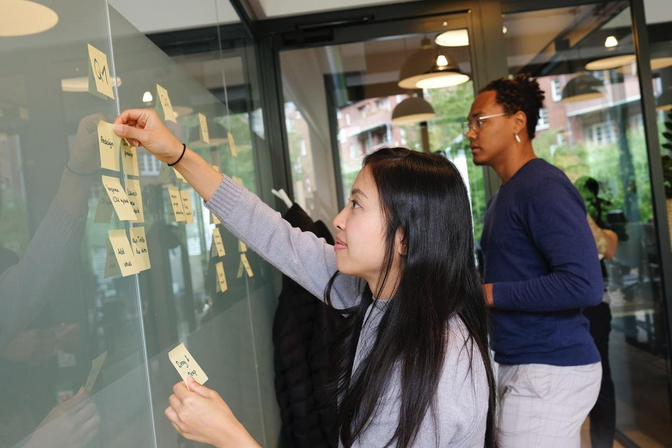
Scaling customer empathy at Trivago

By enabling stakeholders to connect with customers weekly, Trivago’s research team supports continuous discovery and drives improvements in key business metrics like task success rate.

Watch the video and keep reading for more details from our interview with Ruben Stegbauer, UX Research Manager at Trivago
What is Trivago?
Trivago is an online tool called a ‘meta-accommodation search’ that allows anyone to find their ideal hotel room anywhere in the world. It does so by instantly comparing hotel offers, online travel agencies, and alternative accommodation providers.
What challenge was Trivago facing?
Before working with UserZoom, we were being asked to do more research, more often, and to increase the complexity of that research as well, essentially to scale up our research operations. We also knew we had to create a movement within Trivago around research to get stakeholders more closely involved in the research process. To tackle both, we needed the right partner. We needed an ally—especially in creating this research movement—not just another tool in the toolbox.
UserZoom has enabled us to improve how we do research by helping us build what we call continuous interviewing habits. This means we enable our product stakeholders, like designers, product managers, and engineers, to interview customers weekly. And since the beginning of the year, we have enabled them to conduct over 200 interviews. In many cases, those were our stakeholders' first conversations with a customer.
How does UX research support continuous discovery and the product development lifecycle?
We use an analogy called ‘research hats’ to explain how UX research supports the product development lifecycle. We have three different hats as researchers:
- One is the embedded research hat, where we work daily with our product teams to help them decide on a specific product’s development.
- The second one is our centralized or proactive hat, where we conduct foundational research, which is aimed at providing medium to long-term opportunities for the business.
- And finally, we have our coaching hat, which is all about encouraging others to conduct research and improving our stakeholders' research skills. Our main objective here is not to conduct perfect research but to provide opportunities to learn about research and get closer to the customer.
Each of these hats demonstrates how UX research supports the Continuous Discovery model that our product teams pursue. Continuous Discovery is defined as conducting (ideally) weekly user research activities with customers to pursue a desired product outcome. Teresa Torres coined the term in her book Continuous Discovery Habits.
At Trivago, we support the teams using this model first and foremost by allowing them to conduct interviews. We work on the screeners and recruit the participants with the help of UserZoom. But even before that happens, we provide opportunities for our product teams to pursue these weekly research activities by conducting foundational research, like contextual inquiries, diary studies, and interviews.
We also help them analyze the research data and identify the next steps in the research and development process.
What impact has UserZoom had on your organization?
One of the main achievements of using UserZoom and engaging in continuous iscovery was that we, as a team, managed to create a common language around the customer opportunities we're pursuing using the ‘jobs to be done framework’ (jobs are what customers wish to achieve on-site).
As a result, we now have a company strategy focused on these jobs and enabling all Trivago teams to speak the same way about the opportunity they're pursuing. And then, of course, to pick the right research tool and means to understand that opportunity in more detail.
Some quantifiable impact has been around what we call ‘user task success.’ Essentially the ability of our users to get the job done on Trivago that they came to the website for.
Thanks to the research we've done with our stakeholders and using our tools, including UserZoom, we've been able to double the task success measure over time with some of the new designs we've developed. That means that now our users can visit the website and are more likely to find the right hotel.
Why is UserZoom the right partner and platform for Trivago?
Changing user research tools can be a lot of work and time intensive. However, I believe that it was the right decision for our team.
One of the biggest benefits is that UserZoom has researchers that work very closely with us, who are essentially part of our team, who we can consult with, who we trust, and who are experts in the field. Our research partner has been great in helping the team understand the tool and how to tackle our most important research questions best using it.
I also really appreciate that UserZoom provides the UserZoom Academy, which is an easy way for other stakeholders to learn about research and doesn't require much time from the UX research team.


